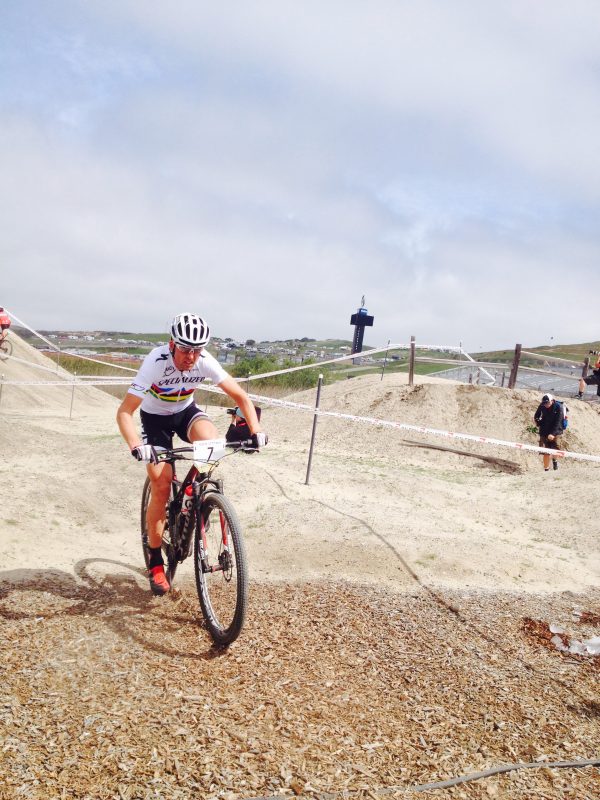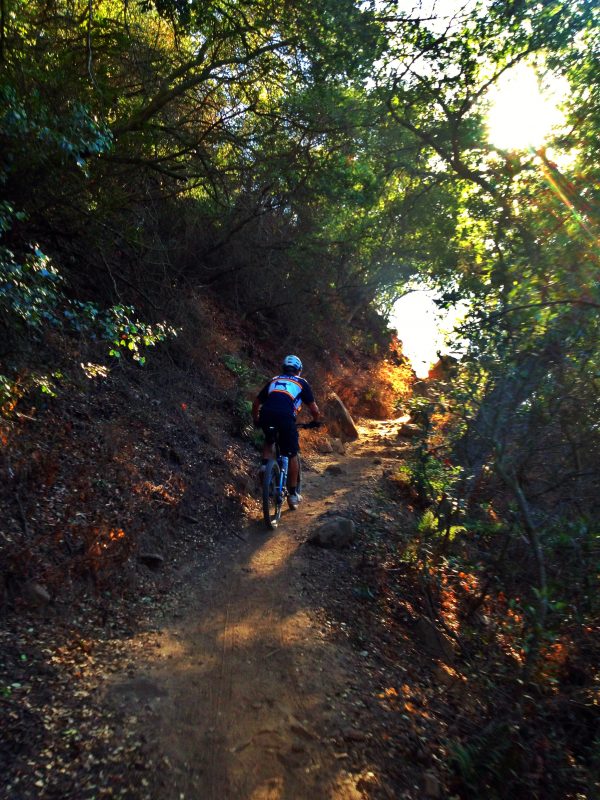The Wheel (R)evolution: One mountain biker’s journey across wheel sizes
Originally posted on April 12, 2017 at 1:33 amWords and photos by Jeffrey Stern
Hoo-Koo-E-Koo. The first time I read that Miwok Indian named fire road on my Tamalpais trails map I fell in love. With the letters, how they flowed like the purest of singletrack sections into one beautiful word – and a beautiful trail at that. Cutting across the mid-section of the beloved Mount Tamalpais and lasting just under 3 miles, it offered steep pitches up and down with bends around giant Redwoods and panoramas of Mill Valley, the Golden Gate and beyond. It’s the trail of my childhood dreams.
It was here aboard my most treasured possession as a kid, the aptly named Hoo-Koo-E-Koo made by Gary Fisher, that I learned to mountain bike as a youth. On 26” wheels no less. I know, crazy, right?
Back then, there were no wheel size choices. Now 26-inch mountain bikes are relics, collector’s items or even considered vintage. Today’s world sees the battle of big wheeled 29-inch bikes and the relatively new 27.5-inch mountain shredders.
Is there a better wheel size for all terrain types? Absolutely not, as each of these wheel sizes is better for certain riding styles and the types of trails you are primarily riding. The truth is I love both sized wheels, but for different reasons. Whether you are a smaller or larger rider, there are benefits to both setups.
I prefer the 27.5-inch wheel size when I want something playful and lively. A bike to remind of riding the 26-inch wheels as a kid. This in-between wheel size is great for technical trails because it’s easier to navigate tricky sections with a quicker, more responsive feeling front end. Threading the needle through tight, rocky sections and other obstacles is easier aboard my 27.5-inch mountain bike. However, during high speed descents, these bikes can feel a bit twitchy and carry less momentum through fast and flowy sections of trails.

Most 29-inch mountain bikes have steeper head-tube angles than their 27.5-inch counterparts, which help make them great climbing bikes. They also descend fast sections like bullets and roll over loose, gravely terrain with more ease and confidence because of the larger rubber footprint. A little bit of acceleration is lost do to the larger wheel size and getting started once caught on a difficult section of trail is that much more difficult as well. I really like the 29-inch for fast trails that require a lot of speed or long, endurance days in the saddle that might involve some road riding between trails.

What’s the verdict?
It completely depends on the terrain you most commonly ride. If varied terrain that isn’t too technical, rocky, rooted or steep is your game, the 29-inch wheel size is your best best. When tackling mostly technical, slower speed trails that require quicker handling, the 27.5-inch will enhance your riding skills evolution. No matter which wheel size you choose, there is fun to be had on every trail. It’s all about testing out what feels right and making a decision based on your skill level, riding style and hometown terrain.

What wheel size do you prefer and why? Let us know in the comments!